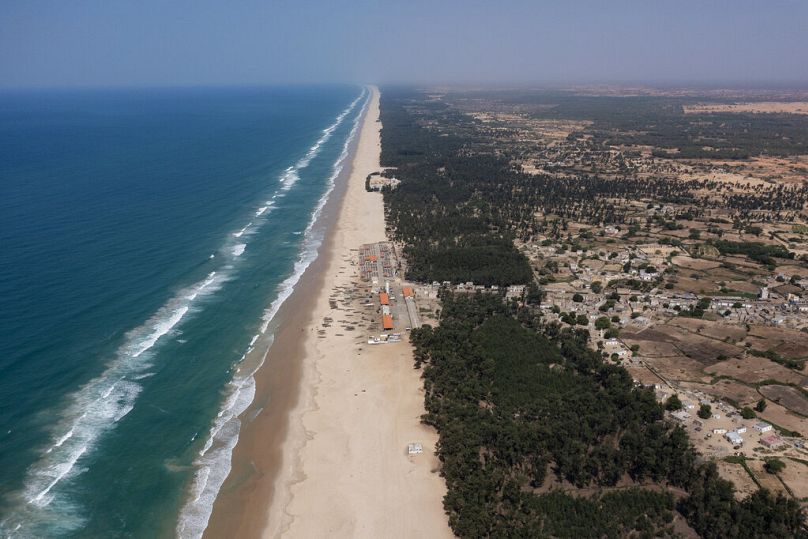In recent decades, disruptive startups have turned many industries upside down by reinventing established ways of working. We are confident in their potential, Ruben Brands and Ben Brandt write.
Almost a fifth of global emissions are now covered by some kind of carbon market, and the cumulative value of all of those was an estimated $850 billion (€768.1bn) in 2021.
But we still need to do more if we are to reach net zero emissions by 2050.
More companies than ever are aware of the severity of the challenge we face, and they are searching for ways to be part of the global solution to the climate crisis.
As a low-friction way to compensate for corporate emissions, voluntary carbon offsetting has picked up steam in recent years.
But these offsets are definitely not perfect. For instance, there is no internationally defined standard for what constitutes a valid offset, meaning schemes can be marketed to businesses with little oversight.
How can we be more certain about offsets?
Companies with good intentions have to navigate an oversupply of low-quality offsets that do little to actually remove carbon dioxide from the atmosphere in a permanent way.
For example, companies can easily offset today’s emissions against new forest growth that may not begin to store significant amounts of carbon for another 70 years and which might not grow successfully at all.
Nor do "avoided emissions credits" solve the problem. Avoided emissions credits let one party emit the amount someone else claims they would have emitted but didn’t.
These offsets are hard to verify, and they risk creating complacency from participating companies without contributing to the critical challenge of rapid emissions reduction.
If we are to achieve our net zero goals as a society, carbon capture has to be part of the solution.
The Intergovernmental Panel on Climate Change (IPCC) has said that to limit global warming to 1.5 degrees Celsius, between five and 15 billion tonnes of CO₂ will have to be removed from the air and stored permanently every year. We’re nowhere near that today.
So we come to a crucial question: how do we bring more certainty to the mysterious and sometimes shady world of offsets while at the same time scaling up the amount of carbon removed in the first place?
Organisations are rallying around innovation-based approach
The answer could lie in an emerging ecosystem of so-called carbon removal credits. Carbon removal credits follow strict quality criteria involving permanence, additionality and verifiability.
However, there are obstacles to overcome before carbon removal credits are truly mainstream.
Many carbon removal initiatives are still in the early stages, permanent storage facilities are just being developed, and the carbon markets are only starting to understand the differences in credit quality.
And, the price per tonne removed is high, for now.
We believe that despite these challenges, carbon removal credits should sit at the centre of companies’ emissions policies.
The good news? Organisations are beginning to build the infrastructure we need to ramp up carbon removal tech.
Remove is one example of a newly launched European accelerator for early-stage carbon removal startups designed to support the emerging carbon removal ecosystem.
And some of the biggest and most influential private and public companies see the benefits of an innovation-led approach.
Stripe, Alphabet, Shopify, Meta, and McKinsey founded the Frontier fund, which is an "advance market commitment" to select and invest in the most promising climate technologies and teams.
Oceanic carbon capture: a potent weapon against climate change
Albeit at a smaller scale, Ledgy has decided to invest its climate budget along similar principles.
After a rigorous evaluation process, Ledgy has decided to buy carbon removal credits from SeaO₂ as a first investment.
Why? It's simple: 24% of all global carbon emissions are bound up in our seas and oceans. Additionally, the concentration of carbon in the ocean is more than 150 times higher than in the air, making oceanic carbon capture technology a potent weapon in the fight against climate change.
SeaO₂’s carbon capture technology could offer a new route to oceanic carbon capture at scale.
SeaO₂’s first prototype, which has the capacity to extract one tonne of carbon dioxide per year, launches in the North Sea this month.
The prototype is just a stepping stone: the next "pilot plant" – which will be able to extract 250 tonnes of carbon per year – is on track to launch by the end of 2023.
We need more startups that dare to think differently
In recent decades, disruptive startups have turned many industries upside down by reinventing established ways of working.
We are confident in the potential of oceanic carbon capture and carbon removal credits, more generally, in helping the push towards net zero.
Companies thinking about funding and financing new climate innovations should look at carbon removal credits and the startups building carbon removal technology as part of a balanced and effective emissions reduction strategy.
The world needs more startups thinking differently about commercialising technologies, and in turn, they need forward-thinking early customers.
Ruben Brands is the CEO of SeaO₂, a Dutch-based tech platform focusing on oceanic carbon capture technology. Ben Brandt is the co-founder and Chief Product Officer at Ledgy, a startup out of Zürich, helping other European startups and scaleups manage equity capital and employee participation.
_At Euronews, we believe all views matter. Contact us at view@euronews.com to send pitches or submissions and be part of the conversation.
_















